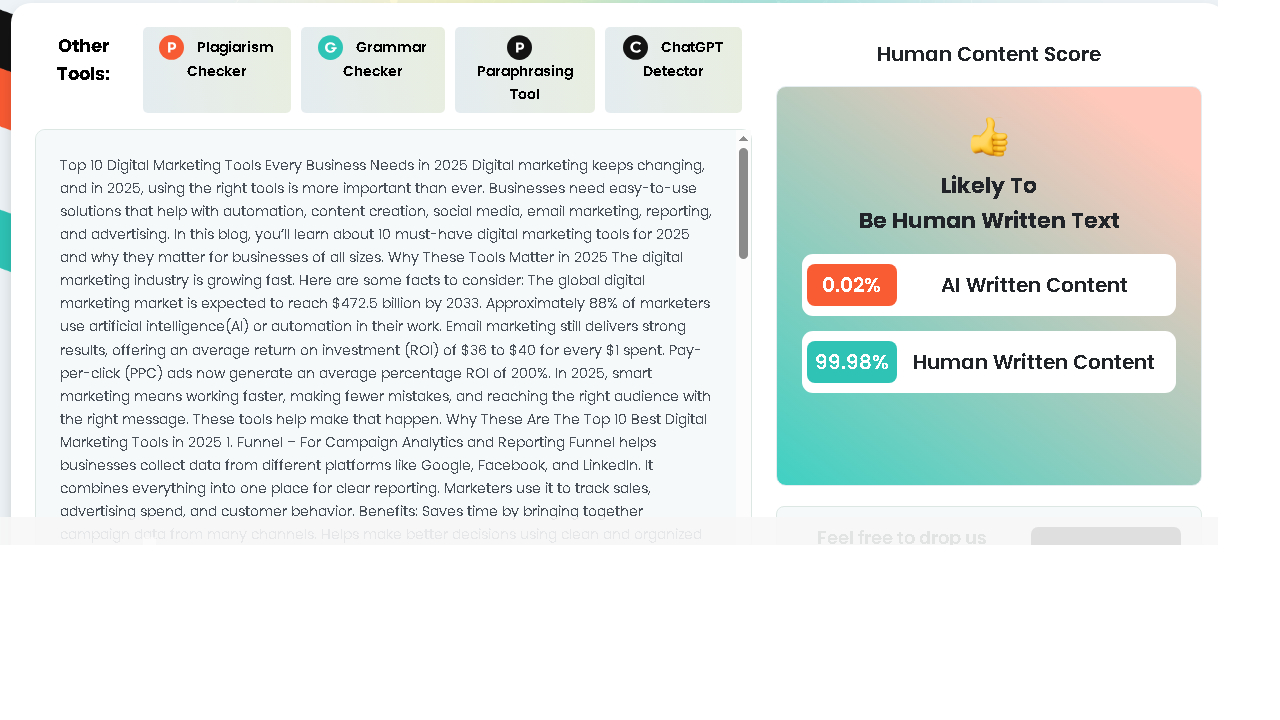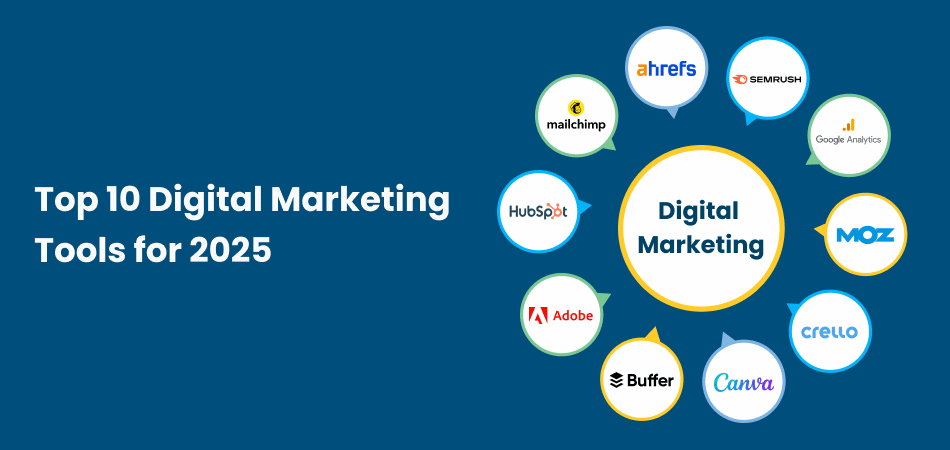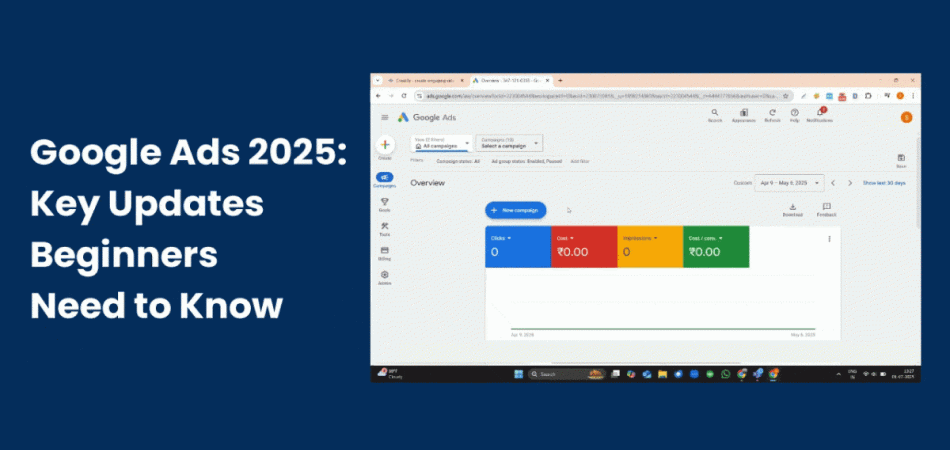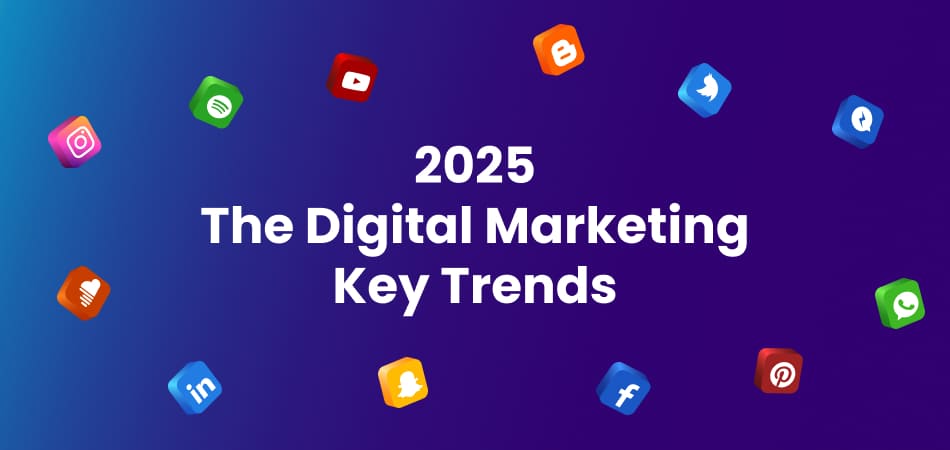Digital marketing keeps changing, and in 2025, using the right tools is more important than ever. Businesses need easy-to-use solutions that help with automation, content creation, social media, email marketing, reporting, and advertising. In this blog, you’ll learn about 10 must-have digital marketing tools for 2025 and why they matter for businesses of all sizes.Why These Tools Matter in 2025The digital marketing industry is growing fast. Here are some facts to consider:
- The global digital marketing market is expected to reach $472.5 billion by 2033.
- Approximately 88% of marketers use artificial intelligence(AI) or automation in their work.
- Email marketing still delivers strong results, offering an average return on investment (ROI) of $36 to $40 for every $1 spent.
- Pay-per-click (PPC) ads now generate an average percentage ROI of 200%.
In 2025, smart marketing means working faster, making fewer mistakes, and reaching the right audience with the right message. These tools help make that happen.
Why These Are The Top 10 Best Digital Marketing Tools in 2025
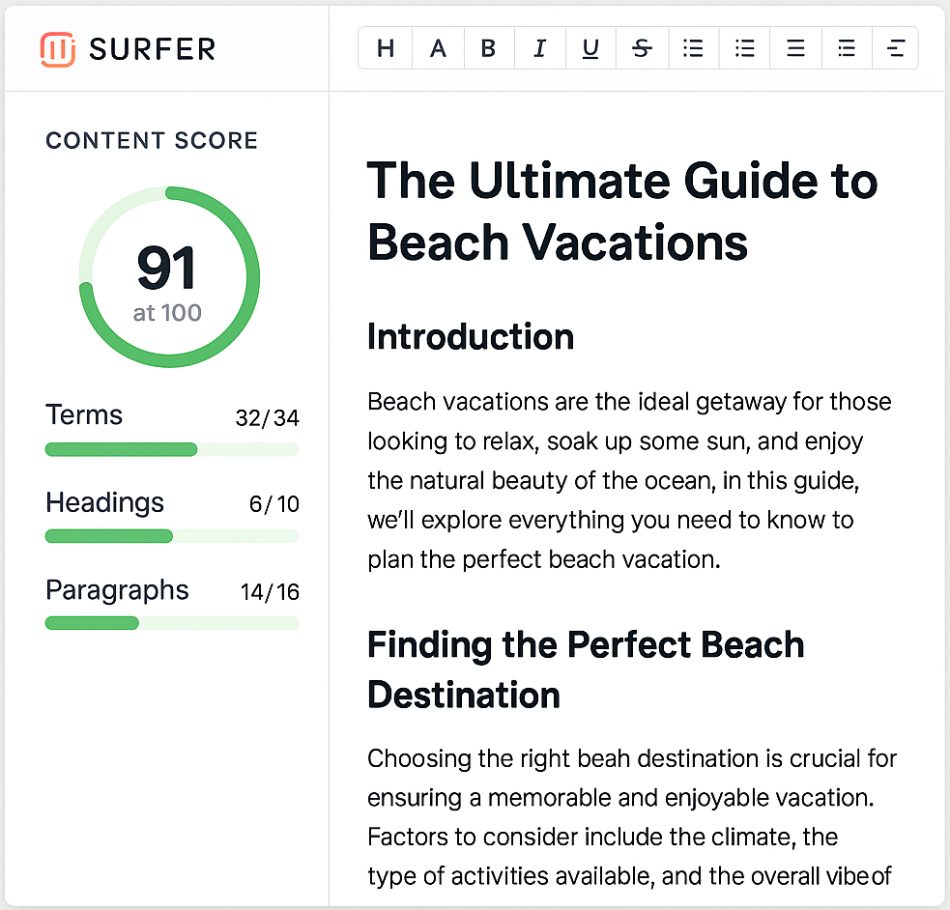
1. Funnel – For Campaign Analytics and Reporting
Funnel helps businesses collect data from different platforms like Google, Facebook, and LinkedIn. It combines everything into one place for clear reporting. Marketers use it to track sales, advertising spend, and customer behavior.
Benefits: Saves time by bringing together campaign data from many channels. Helps make better decisions using clean and organized information.
2. Google Analytics 4 (GA4) – For Website Insights
Google Analytics 4 tracks what visitors do on your website. It shows which pages they visit, how long they stay, and what actions they take.
Benefits: Understand how your website performs. Learn which content attracts visitors and where improvements are needed.
3. HubSpot – For Customer Relationship Management (CRM) and Marketing
HubSpot is an all-in-one platform. It helps manage customer contacts, create email campaigns, handle social media, and improve search engine rankings.
Benefits: Keeps all customer and marketing data in one system. Makes it easier to automate marketing tasks and track sales.
4. Jasper or Copy.ai – For Content Writing
Jasper and Copy.ai help marketers write blogs, emails, and advertisements quickly. Instead of spending hours writing, you can produce content in minutes.
Benefits: Saves time on writing. Useful for creating large amounts of quality content quickly.
5. Canva – For Designing Images and Videos
Canva allows you to design graphics, social media posts, videos, and more. You don’t need professional design skills to use it.
Benefits: Helps create professional-looking content easily. Great for social media marketing and advertising.
6. Surfer SEO – For Improving Google Rankings
Surfer SEO helps marketers write content that ranks well on search engines like Google. It provides keyword suggestions and content structure advice.
Benefits: Increases website traffic by improving search rankings. Makes blog posts more effective.
7. Mailchimp – For Email Marketing
Mailchimp is one of the best platforms for sending marketing emails. You can automate welcome emails, set up promotional campaigns, and track results.
Benefits: Delivers high returns from email marketing. Helps keep in touch with leads and customers.
8. Hootsuite or Sprout Social – For Managing Social Media
These tools allow you to schedule posts, monitor mentions, and measure how well your social media campaigns are performing.
Benefits: Saves time managing social media across platforms like Facebook, Instagram, and LinkedIn. Helps improve engagement with your audience.
9. Google Ads and Meta Ads Tools – For Smarter Advertising
Both Google and Meta (Facebook/Instagram) offer smart advertising tools. These platforms automatically adjust bidding strategies and test ad designs to get better results.
Benefits: Improves advertising performance without needing constant manual updates. Helps businesses get more leads and sales.
10. Baserow – For Team Collaboration and Planning
Baserow is a no-code database tool that helps marketing teams organize content calendars, campaign schedules, and project workflows.
Benefits: Keeps teams organized and projects on track. Makes collaboration easy even if team members work from different locations.
Real-Life Examples of How These Tools Help
- Marketing Agencies: Funnel saves agencies over 20 hours each month on client reporting.
- Blog Writers: Using Jasper with Surfer SEO helps create a fully optimized 1,000-word article in under 15 minutes.
- Email Campaigns: Combining HubSpot with Mailchimp has helped businesses increase conversions by 27%.
- Advertising: Google’s Performance Max and Meta’s Advantage+ tools have improved return on ad spend (ROAS) by up to 30% for many businesses.
Why These Tools Are Essential in 2025
- Faster Content Creation: Writing and designing marketing content is quicker with tools like Jasper and Canva.
- Better Data Insights: Tools like Funnel and GA4 help marketers make smart decisions using real data.
- Smarter Advertising: Google and Meta’s automation features improve ad campaign results.
- Personalized Marketing: HubSpot and Mailchimp allow for more targeted and effective communication with customers.
How to Get the Most Out of These Tools
- Start Small: Focus on one area first—like social media or email marketing—before adding more tools.
- Connect Everything: Use tools like Funnel and GA4 together to track performance in one place.
- Automate Carefully: Set up automatic emails and ads, but always monitor performance.
- Review Monthly: Regularly check your analytics dashboards to see what’s working and what needs improvement.
- Train Your Team: Make sure everyone knows how to use these tools effectively.
Frequently Asked Questions (FAQs)
Q1. Are these digital marketing tools free to use?
Some tools like Google Analytics have free versions. Others like HubSpot, Jasper, and Mailchimp offer both free and paid plans depending on your business needs.
Q2. Which tool should I start with if my business is new?
Start with Google Analytics 4 to track website performance, then add Mailchimp for email marketing.
Q3. Can small businesses use these tools?
Yes. Many of these tools are beginner-friendly and have pricing plans for small businesses.
Q4. Do I need technical skills to use these tools?
Most tools are designed for marketers without deep technical knowledge. Platforms like Canva and Baserow are no-code and easy to learn.
Q5. How often should I update my marketing tools?
Review your tool setup every 6 to 12 months. Marketing trends and technology change quickly, so regular updates help keep your strategy fresh.
Final Thoughts
Digital marketing in 2025 is all about working smarter, not harder. You do not need dozens of tools—you just need the right combination that fits your business goals.
Start by focusing on key areas like:
- Tracking your website and ads: Use Google Analytics 4 and Funnel.
- Creating content quickly: Use Jasper for writing and Canva for visuals.
- Automating customer outreach: Use HubSpot and Mailchimp.
- Managing social media easily: Use Hootsuite or Sprout Social.
By combining these tools, businesses can save time, reduce manual work, and increase sales. The sooner you start building your digital marketing toolkit, the faster your business can grow in 2025 and beyond.
